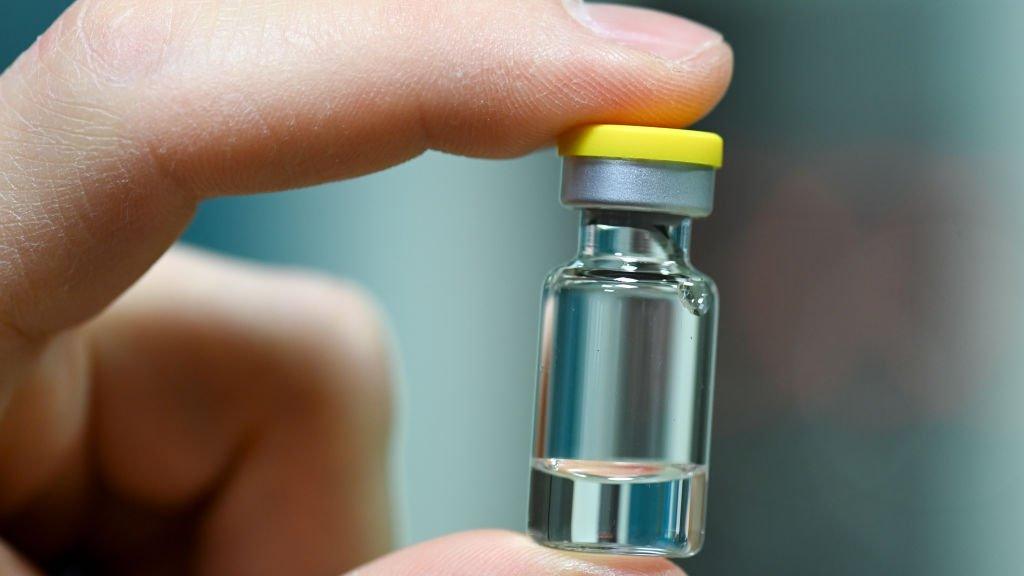Secondary school testing: Everything you need to know
- Published
- comments
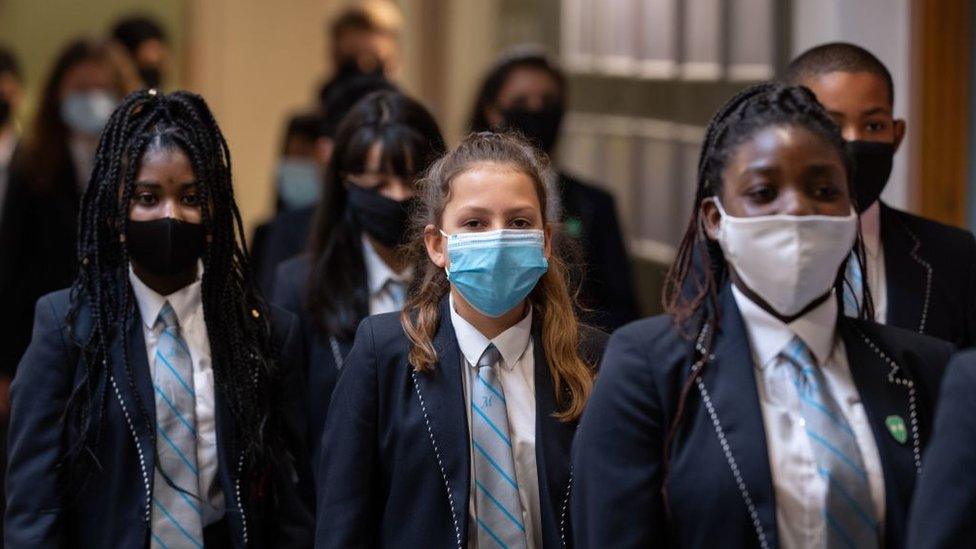
You may have heard that from 8 March, all secondary school pupils in England will be asked to carry out two at-home tests per week.
The aim is to help stop the spread of the coronavirus and keep track of who might have the virus, even if they don't have any symptoms.
Primary school pupils aren't being asked to take the tests - only secondary school pupils (Year 7 onwards).
For some pupils, this may be the first time they've had to have a lateral flow test, while others, for example older children whose parents are key workers, might have already been doing them as they've still been going in to school.
Here we've explained all about them; what to expect, how to take the test and how to get your results.
What is a lateral flow test?
What's coronavirus testing like in secondary schools?
There are two kinds of coronavirus tests which are being widely used in the UK at the moment - a PCR test, (polymerase chain reaction), and a lateral flow test.
The PCR test is what is used at the local testing centres. These are swab tests which need to be sent away to a laboratory, and provide a result usually within 24-48 hours.
While lateral flow tests, which are being issued to thousands of schools and businesses around the UK, provide a result within 30 minutes.
WATCH: Prime Minister Boris Johnson announces his plan for lifting lockdown in England
The benefit of the PCR test is that it provides a more accurate result if the person is showing no symptoms of Covid-19.
However, a lateral flow test provides a faster result which can then be backed up by a PCR test if required.
How do you take a lateral flow test?
How do you take a Covid lateral flow test at home?
Don't worry. This part may seem daunting but you won't have to do this alone for the first time.
In fact, the government says that at least the first three tests you do will be at school followed by twice weekly tests at home.
At school a teacher will explain how to do the test or you will be shown a video about how to do it.
If you are doing the test at home you can get a parent to help you.
The tests can work in slightly different ways - for example it might need leaving for more or less time to get a result. But as a rough guide - using advice from the NHS - this is what to expect.
You'll likely be given four items in order to take a lateral flow test:
A sterilised swab
A foil packet which contains the testing strip
A small container of liquid - this is called a buffer solution
A cap which helps accurately drop the correct amount of buffer solution onto the testing strip
You may also want a small cup (like an egg cup) to put the buffer solution container in to avoid any spillages!
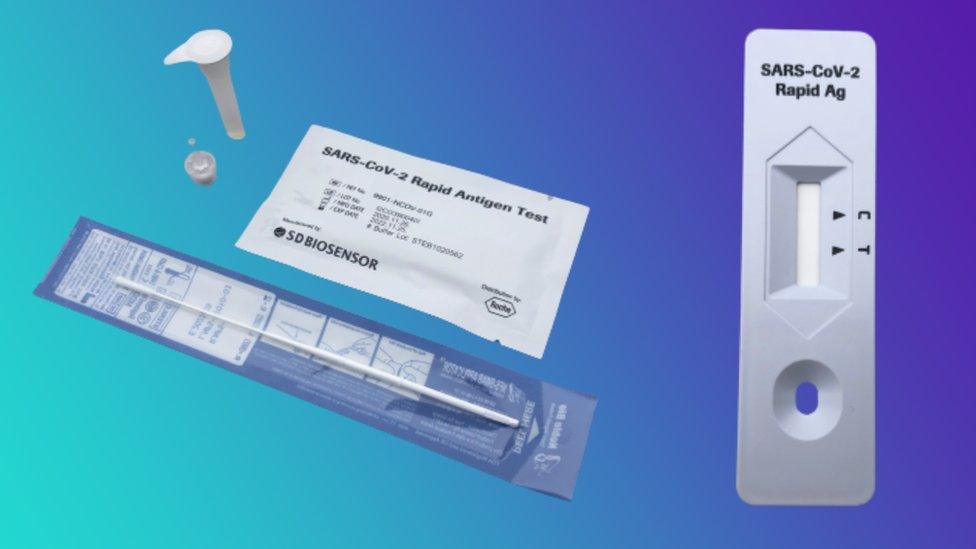
There are lots of different kinds of tests but this is one example of a lateral flow test. The testing strip on the right will be inside a foil wrapper like the white one shown
Step 1.
Blow your nose with a clean tissue. Then wash your hands for at least 20 seconds with warm soapy water. Make sure you have a clean flat surface to take the test like a desk or kitchen table. Place the tube of buffer solution upright into the small cup being careful not to spill it.
Step 2.
Remove the swab from the packet. Depending on the instructions of your test, take a sample from one or both nostrils using the swab. (Some tests might require a swab from the back of your throat instead or alongside the swabs from your nose.)
This involves putting the swab up your nostril - there is no need to force it and it shouldn't hurt. You should give the swab a very gentle wiggle around the inside of your nostril about ten times, and if required, repeat on the other nostril.
This may feel slightly uncomfortable but it shouldn't be painful. Many people say the tickling sensation makes your eyes water and can also make you sneeze!
Step 3.
Once you have done that, place the fabric end of the swab into the small tube of buffer solution.
Press the swab head against the edge of the tube while gently squeezing the tube, and rotate the swab around the tube for 10 seconds to squeeze as much fluid out as possible.
Remove the swab, place it back in the plastic packaging and dispose of it in your household bin.
Step 4.
Now place the nozzle cap into the top of the tube of buffer solution firmly. Once you are happy it's on tightly, turn the tube upside down and drop two droplets of the solution into small circular well on the testing strip.
Step 5.
Place the testing strip onto a flat surface and leave it. Set a timer for the amount of time stated in the instructions, for example 30 minutes and when that time is up you should have a result.
It is important to not read your result too soon or too late as this can show false results.
If you see one line next to the "C", this is a negative result.
If you see two lines next to the "C" and the "T" - even if they are faint - this means the test is positive.
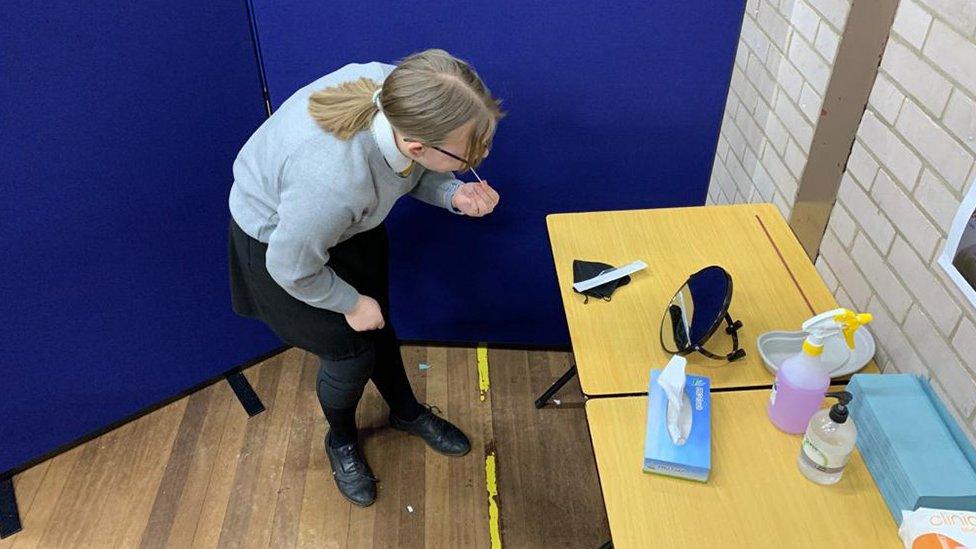
Pupils will be asked to take tests upon their return to school
Are the tests compulsory?
No, you don't have to take the tests, but the government is strongly advising people to take them to help stop the spread of coronavirus.
You or your parent (if you are younger than 16) have to give consent to have the test and it is not a requirement in order for you to attend school.
Up to one in three people who have Covid don't show any symptoms which is why the government wants to test pupils to stop people spreading the virus in school without knowing.
What happens if you get a positive result?
If your result is positive you need to tell your school and they will give you advice about what to do next.
You may be asked to book a PCR test through the government website to confirm the result.
You will have to isolate at home with your family for 10 days, from the date of the test or the start of any symptoms, before being able to go back to school.
Has testing in schools happened before?
WATCH: What is mass-testing in schools like?
Yes! Back in December 2020, secondary schools in Liverpool were able to reduce the number of infections as they carried out mass testing pilot schemes.
Newsround spoke to a few children at one school where they were helped by the armed forces to set up testing systems.
As most of the tests secondary pupils will be taking now will happen at home, the army won't need to be present this time.
What do people who already do this think?
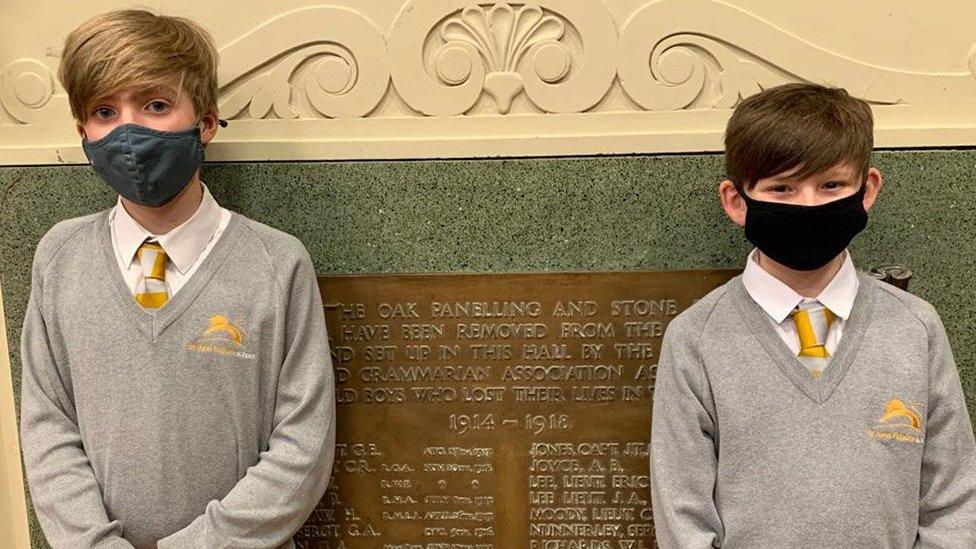
Finlay and Callum have already been doing tests at school
Finlay, who is in Year 7, has been coming into school during lockdown and so he is used to doing the Covid tests.
"The tests, they're not very nice," he says. "Once you get used to them, they're not that bad and it becomes a routine. And then doing them at home, I think because you've been doing them in school, it shouldn't be that bad."
"I think it will be easier for people who've been doing them at school to do them at home," he added.
Callum, also in Year 7, says taking the tests was "challenging" at first. He says the swab up the nose is the most difficult part.
"It makes your eyes water and it's a horrible thing to do. But it's good to have them to make sure you're safe and that other people are safe."
- Published23 February 2021
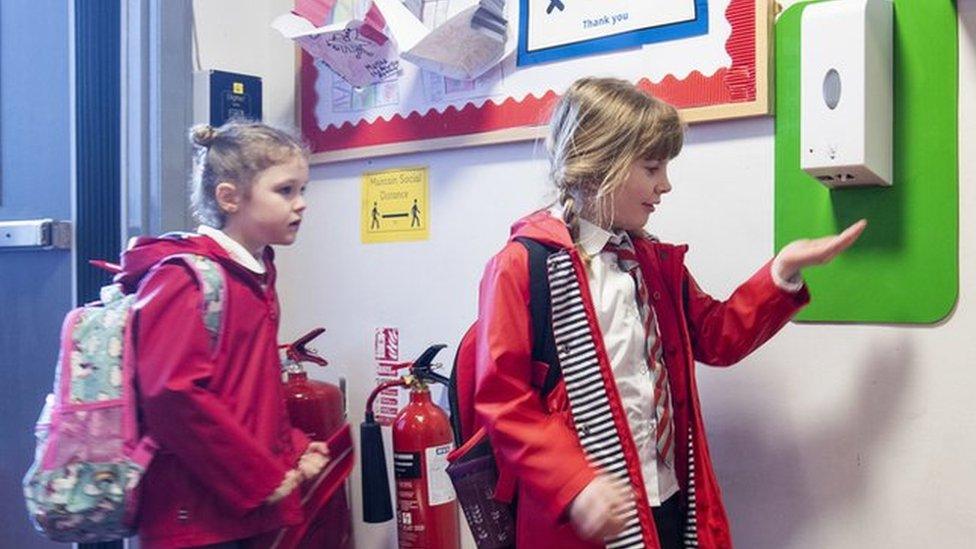
- Published23 February 2021

- Published13 February 2021
